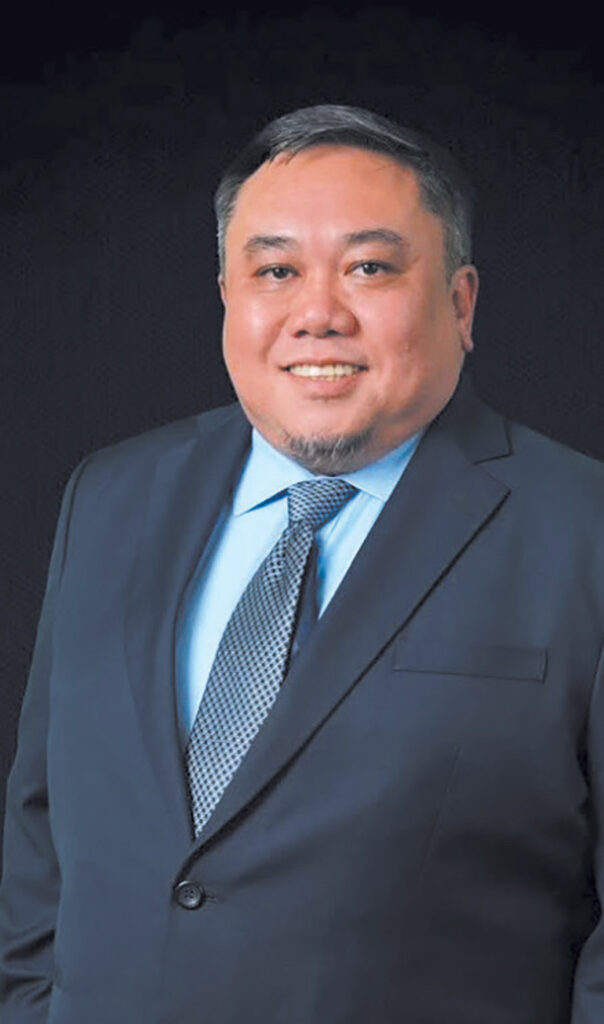Providing broader, easier access to employees’ healthcare

By Mhicole A. Moral, Special Features and Content Writer
Poor health continues to affect a wide segment of the Filipino population, creating a cycle that takes a toll on both personal well-being and workplace productivity.
Latest data from the Philippine Statistics Authority show that government schemes and mandatory healthcare contributions covered 44.7% of the country’s current health expenditure. Household out-of-pocket payments followed at 42%, with voluntary healthcare payments accounting for 12.6%.
Total health expenditure reached P1.56 trillion in 2024, a 17.1% increase from P1.33 trillion the previous year. On average, each Filipino spent P12,751 on health.
Consequently, projections from global advisory firm WTW indicate that healthcare expenses in the country will rise another 18.3% in 2025. This is the second-highest expected increase in the Asia-Pacific region, only behind Indonesia.
With medical costs rising, more companies are shifting from purely covering treatment expenses to promoting prevention. Employers are offering programs that include regular health checkups, fitness benefits and mental health services.
Health maintenance organizations, or HMOs, remain the most common choice for employer-sponsored healthcare in the Philippines. They typically provide employees with access to a network of doctors and hospitals at prearranged rates that help lower out-of-pocket costs.
Christopher V. Tan, first vice-president and head of the sales and marketing department of Cocolife’s Healthcare Division, said demand for health coverage remains strong as more employees see it as an essential part of their employment package.

“Filipinos today are more health-conscious than ever,” Mr. Tan said. “Healthcare is increasingly viewed not just as a benefit but as a necessity and a security blanket.”
In the past, most employees used their health coverage mainly for hospitalization or treatment after becoming ill. Cocolife has seen a change in behavior, with more employees now using it for preventive care such as executive checkups, vaccinations and wellness screenings.
The coronavirus (COVID-19) pandemic five years ago has intensified the focus on employees’ physical and mental health. Younger professionals, in particular, appear more willing to invest time and effort in maintaining overall wellness rather than waiting for health problems to develop.
While treatment for acute illnesses and outpatient consultations still account for much of the claims, services like wellness and lifestyle programs, occupational health screenings, and expanded annual physical examinations are becoming a higher priority.
Maintaining quality healthcare packages
Medical inflation remains a major problem worldwide, affecting hospital room rates and the cost of medicines. In some areas in the Philippines, the lack of nearby hospitals or clinics makes access to care more difficult.
“Our mission is to cover as many Filipinos as possible. On the other hand, expanding quality healthcare services in a cost-sensitive market like the Philippines poses several challenges,” Mr. Tan said.
Cocolife has redesigned its healthcare packages to reach more Filipinos with affordable plans that still provide quality care. Mr. Tan said Cocolife now offers a tiered product design that fits different budgets while maintaining essential benefits.
For example, a basic plan may cover primary care and hospitalization, while higher-tier packages may include specialized treatments or wider provider networks.
The provider has also strengthened its utilization management, such as monitoring how healthcare services are used and working with partner hospitals and clinics to keep services cost-effective.
“We [are] working closely with our partners to ensure optimal use and cost effectiveness without compromising quality of care,” he said.
Modernizing health coverage
HMOs are now expanding beyond traditional coverage that once focused mainly on hospital stays and medicine reimbursements. Coverage today includes services that address a wider range of needs.
Healthcare providers are also beginning to make mental health services part of their offering.
“Services such as psychiatric consultations, counseling sessions and stress management programs are becoming more common,” Mr. Tan said. “Depending on the employer’s plan, these services may be included as standard benefits or offered as optional riders.”
Digitalization, on the other hand, is also making access to care faster, easier and more reliable for members.
“Digitalization has fast become a necessity rather than a value-added service in the healthcare industry,” he added.
Cocolife now offers 24/7 teleconsultations through its partners Doctor Anywhere, E-Konsulta and HiDoc. These services allow members to consult licensed physicians without visiting a clinic or hospital.
The company has also upgraded its medical helpline with a more advanced telecommunication system, making it easier for members to reach support at any time.
Aside from consultations, Cocolife has introduced mobile app services and real-time issuance of letters of authorization, which are required for scheduling medical procedures. These features are available through the Cocolife Healthcare Virtual Card App, which also lets members store their information and track their benefits.
Maximizing HMO benefits
While HMOs help cover employees’ medical costs, some rarely use their packages because they do not fully understand the coverage. Others find that their preferred doctors or hospitals are not included in the network. Even benefit that appears strong on paper can still fall short when it does not match the needs of those it is meant to serve.
Such gap between what is offered and what is useful points to a larger responsibility for employers. Companies are suggested to review how employees use these plans and identify ways to make the benefit more practical.
“The most effective healthcare plans are those that go beyond compliance. Healthcare plan designs engage employees, address real needs, and evolve over time,” Mr. Tan said.
He added that companies should actively gather feedback from employees about what they need in a healthcare package. Some may want broader hospital coverage, while others may prefer more preventive services or mental health support. Knowing these differences helps companies select plans that work for a wider range of employees.
In addition, Mr. Tan pointed out that integrating annual checkups, health screenings, or lifestyle programs into the HMO package can lower costs in the long run and improve overall workforce well-being.
Companies also need to balance costs with quality of care. A low-cost plan may seem appealing on paper, but if it leaves employees paying high out-of-pocket expenses or struggling to find accredited doctors, it fails its purpose. Mr. Tan said healthcare benefits should be broad enough to meet common needs without becoming a financial strain for either employers or employees.
To make the efforts sustainable, employers are encouraged to promote health literacy. Orientation sessions, printed guides or brief reminders during company meetings can help address this issue.
“At Cocolife, we value long-term partnerships rooted in deep collaboration. Together, we create solutions that not only manage costs but profoundly uplift and empower the lives of every employee,” Mr. Tan said.



